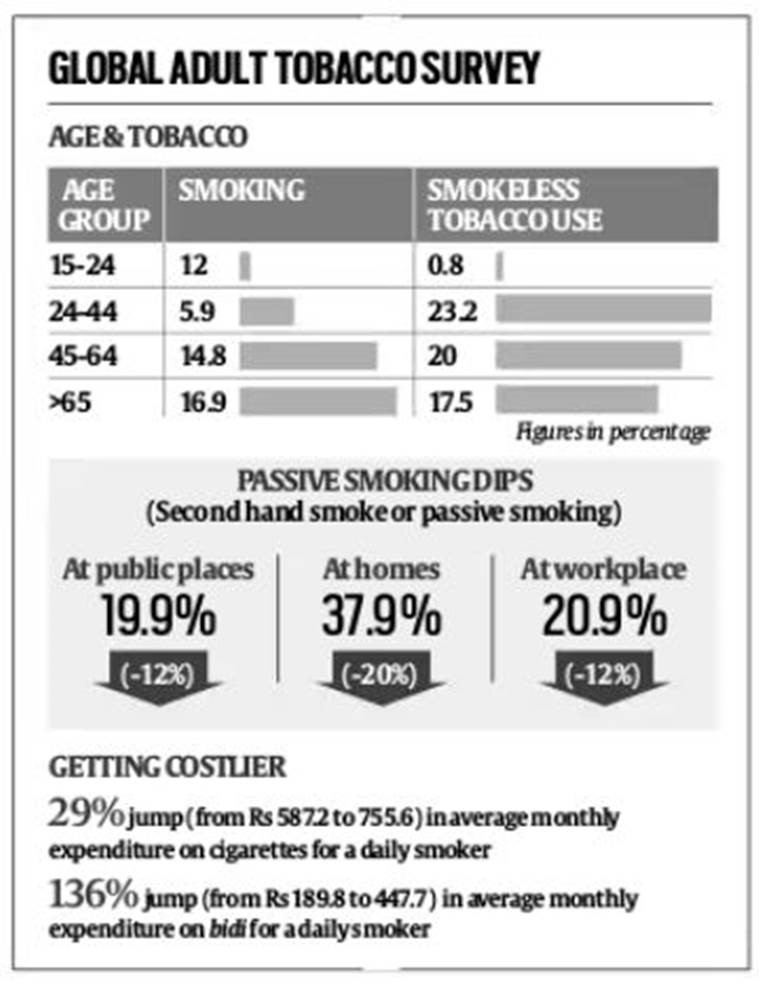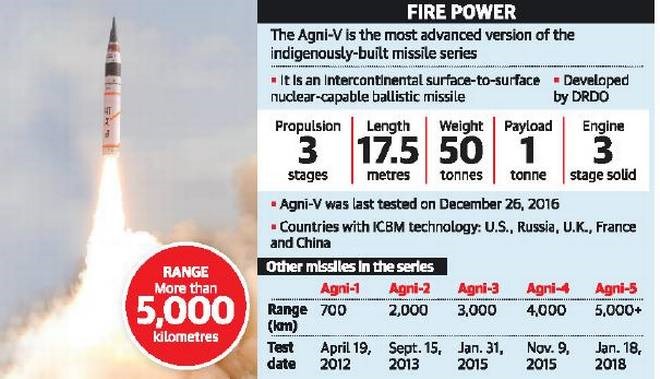IASbaba's Daily Current Affairs (Prelims + Mains Focus)- 19th January 2018
Archives
(PRELIMS+MAINS FOCUS)
EWDS (Early Warning Dissemination System)
Part of: Mains GS Paper III- Disaster and disaster management.
Key pointers:
- Odisha will become the first Indian state to have an early warning system in place for natural disasters.
- Odisha is the first State in lndia to have developed an automatic public address system that can be activated along its entire coast.
- Early warning Dissemination System project aims to establish a fool-proof communication system to address the existing gaps in disseminating disaster warning up to the community level.
- The EWDS comprises of technologies like Satellite-Based Mobile Data Voice Terminals (SBMDVT), Digital Mobile Radio (DMR), Mass Messaging System (MMS) and Universal Communication Interface (UCI) for inter-operability among different communication technologies.
- Disaster warnings would be issued through sirens that will go off simultaneously from 122 towers in six coastal districts.
- It is being implemented with assistance from the world Bank's national cyclone risk mitigation project.
Article link: Click here
Global Adult Tobacco Survey (GATS)
Part of: Mains GS Paper II- Issues relating to development and management of Social Sector/Services relating to Health
Key pointers:
- GATS is a nationally representative household survey of adults 15 years of age or older that is intended to enhance the capacity of countries to design, implement and evaluate tobacco control interventions.
- GATS 2016-17 was conducted by the Union health ministry with technical assistance from the World Health Organisation (WHO) and Centres for Disease Control and Prevention (CDC), US.
- Global Adult Tobacco Survey (GATS) 2016-17, India has witnessed an overall decline in the number of tobacco users in past seven years, especially among the age group of 15 to 24.

Pic link: http://images.indianexpress.com/2018/01/survey1.jpg
Article link: Click here
Report highlights India’s digital divide
Part of: GS Paper II – National; India and Bharat; Urban-Rural divide
Key pointers:
· Report name: Pratham’s Annual Status of Education Report, 2017
· Report focused on rural youth in the 14-18 age group
· Kerala - far ahead of all Indian States in breaching the digital divide (very low percentage of the surveyed rural youth had never used the Internet and mobile phone)
· West Bengal seems right at the bottom in terms of the rural youth’s access to the Internet, computers and mobiles (high percentage of rural youth had never used the Internet and mobile phone)
Article link: Click here
Agni-V successfully tested for 5th time
Part of: GS paper III: Defence and Security
India successfully tested Agni-V
About Agni V:
- intercontinental ballistic missile developed by the Defence Research and Development Organisation (DRDO)
- long range surface-to-surface ballistic missile
- part of Integrated Guided Missile Development Program
- range of over 5,000 km; can reach most parts of China

Article link: Click here
(MAINS FOCUS)
Towards solar-powered agriculture
Introduction:
Renewable energy is now seen as the key electricity supply option, given its rapidly falling costs and its contribution to enhancing energy security at a time of ever-rising fossil fuel imports.
Among renewable energy, solar energy is increasingly becoming mainstream due to cost feasibility and higher efficiency. India must exploit the potential of this technology to help farmers meet irrigation needs.
Agricultural areas receive an abundance of sunlight, thus they make fantastic sites for solar power. Masses of unused land is ideal for large solar systems that can offset the burden of a high electricity consumption.
Shift towards solar-powered agriculture
- In the past few years, solar pumps have consistently stimulated the interest of various bureaucrats and politicians.
- There is no shortage of ideas which the Centre, States, civil society organisations, and enterprises are adopting to enhance penetration of solar for irrigation.
For instance,
- Maharashtra is solarising its agricultural feeders by installing solar power plants at the substation level, through competitive bidding.
- Karnataka is promoting solar pumps for existing grid-connected farmers under a net-metering regime, allowing them to generate additional income by feeding back surplus energy into the grid.
- In eastern States, GIZ, a German development agency, has piloted community ownership models providing water-as-a-service using solar pumps.
However, there are some concerns:
Despite the diversity of approaches and significant government subsidies, only about 1,42,000 pumps have been deployed till date against a target of one million pumps by 2021.
Majority of the marginal farmers still rely on buying water, the costliest option for irrigation, or on renting pumps to meet their needs.
Such limited demand, in a country with 132 million farmers and 28 million existing irrigation pumps, calls for a reflection on existing deployment approaches.
So, how should India proceed with this impactful technology? What type of deployment approaches should it adopt?
Research studies from Council on Energy, Environment and Water (CEEW) highlights the following –
- The government should target marginal farmers with smaller solar pumps, particularly in areas with good groundwater development potential.
- Second, government should couple solar pump deployment with micro-irrigation and water harvesting interventions at the farm and community levels.
- Third, government should focus on technology demonstration and deploy at least five solar pumps in each block of the country.
- In regions with already good penetration of electric pumps, prefer feeder solarisation through competitive bidding over solarisation of individual pumps.
- In regions with prevailing local water markets, promote community-owned solar pumps.
- Encourage sharing of solar pumps among farmers through farmer extension programmes.
- Provide interest-subsidy to farmers combined with reduced capital subsidy to enable large-scale deployment of solar pumps in a shorter span of time.
Conclusion:
In India, 53% of the net-sown area is still rain-fed. Solar pumps hold potential to enhance irrigation access, advance low-carbon agriculture, reduce the burden of rising electricity subsidies, and improve the resilience of farmers against a changing climate.
The above methods and efforts suggested by CEEW could have a profound effect on farmers’ willingness to adopt solar pumps and spur bottom-up demand.
Such an approach would cover a greater number of farmers, helping them reap the benefits of solar pumps sooner, and increase overall returns to the economy.
India must exploit the potential of this decentralised technology to achieve the dual national targets of 100 GW of solar and doubling farmers income by 2022.
Connecting the dots:
- Despite the stimulated interest of various bureaucrats and politicians and significant government subsidies to enhance the penetration of solar for irrigation, its deployment is very poor. Do you agree? Suggest what kind of deployment approaches should the government adopt?
NATIONAL/EDUCATION
TOPIC: General Studies 2:
- Government policies and interventions for development in various sectors and issues arising out of their design and implementation.
- Welfare schemes for vulnerable sections of the population by the Centre and States and the performance of these schemes; mechanisms, laws, institutions and Bodies constituted for the protection and betterment of these vulnerable sections.
- Issues relating to development and management of Social sector or Services relating to Health, Education, Human Resources.
ASER 2017: Current challenges in primary education
Introduction:
There is a direct bearing of poor learning outcomes in primary schools on the students’ future. The rot in India’s primary education is bound to affect the quality of our workforce.
Pratham’s latest Annual Survey of Education Report (Aser) 2017, “Beyond Basics”, that focuses on students in the 14-18 age group highlights the following –
- While 86% of adolescents are enrolled in schools, they are under-equipped to contribute to the economy in any meaningful way.
- 25% of the students cannot read a basic text in their own language fluently.
- 40% of 18-year-olds cannot read a simple sentence in English.
- And most of them lack basic arithmetic skills; only 43% of them could perform a simple division.
- More girls than boys drop out of school between ages 14-18. While boys drop out to work, girls usually stay at home and help with domestic chores.
All these translates to unacceptable performance in everyday tasks, such as - calculating time, applying the unitary method, comprehending the instructions written on a pack of oral rehydration solution etc.
Concerns:
India has achieved universal enrolment at the elementary level. This is a great achievement, but getting students to school is only the beginning of human capital formation. Learning requires a lot more than attendance.
In order for students to stay in school, the school needs to create a noticable difference in the students’ abilities.
The drop in the enrolment rate in secondary education (78.5%), despite the high returns to education, shows that something is wrong in our quality of instruction.
Performance of private unaided schools better than government schools
- The ASER report highlighted that - Private unaided schools have much better learning outcomes per unit of expenditure.
- Contrary to popular opinion, most private unaided schools are inexpensive; 80% of them charge a fee that is lower than the government’s per-pupil expenditure (PPE).
- In terms of learning outcomes, both private and government schools performed poorly, but private schools perform better.
- Private unaided schools are delivering the same, if not better, learning outcomes than government schools at a fraction of the cost, despite resource constraints.
This shows that more inputs do not translate into better outputs. Despite qualified teachers, mid-day meals and free admissions, 13 million students left government schools between 2011 and 2016, while private school enrolment increased by 17 million in that duration.
Clearly, people are choosing private schools for their better service.
What implications does this have for India’s education policy?
- For starters, the government needs to acknowledge the fact that “unrecognized” private unaided schools play an important role.
- The Right to Education Act stipulates that private schools cannot be established or continue to function without obtaining a “certificate of recognition” from the state government, i.e. until they meet stipulated norms such as the maximum pupil-teacher-ratio and infrastructure. This has made many schools economically unviable and forced them to shut down.
Given that millions of students have left government schools for private ones, the government should support their education by giving school vouchers to all underprivileged students. The students can choose to spend the voucher in their government school, or give it to a private school. This will increase the purchasing power of all parents and allow them to send their child to school for more years, or send them to a better school.
Better managed schools will attract more students and expand, while poorly performing schools will shrink.
The increasing number of government schools that are emptying-out, but continue to drain resources, will have to improve their performance or they might cease to exist.
Policies such as free bicycles to girls in Bihar have been successful in increasing enrolment by improving mobility. Building gender-specific toilets in schools is another measure that helps in improving girls’ enrolment.
As a welcome move, the upcoming New Education Policy is likely to focus more on outcomes than inputs.
Conclusion:
2018 will be a historic year for Indian education policy. The Kasturirangan Committee is expected to release the New Education Policy, outlining the principles, policies and, perhaps, specific programmes and pilots that will guide education delivery in the country.
An educated citizenry is vital for a democracy. If our education system does not enable people to comprehend the written word, keep stable jobs and participate in reasonable debates, it is a problem that needs immediate redressal.
While the Aser report does not paint a favourable picture of the quality of the present workforce, education reforms can change the situation for the next generation.
Connecting the dots:
- Despite the stimulated interest of various bureaucrats and politicians and significant government inputs to enhance the enrollments in primary and secondary education, its enrollment is very poor. Do you agree? Suggest what kind of implications does this have for India’s education policy?
MUST READ
Transparent Marking
Current challenges to growth, and long-term constraints
Reading is power
We need labour reform of the right kind
